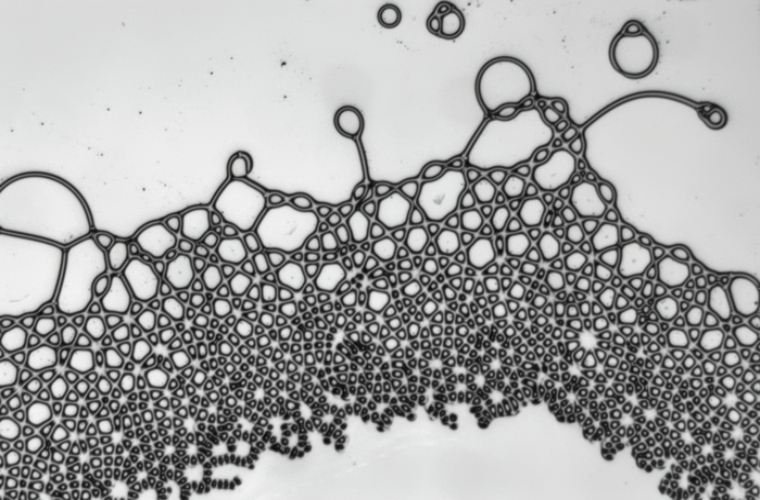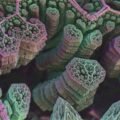A mesmerizing 2-minute video released by researchers from Aalto University in Finland shows how various liquids reacted to electric fields, including creating shapes and structures seen almost exclusively in solids. These unexpected forms included lattices, squares, and even donut shapes, with the electrically charged liquids somehow resisting their own natural tendency to fill the donut’s central void.
“Things in equilibrium tend to be quite boring,” said Professor Jaakko Timonen from the university’s Department of Applied Physics in the press release summarizing the team’s research. “It’s fascinating to drive systems out of equilibrium and see if the non-equilibrium structures can be controlled or be useful.”
Background: These Liquids Act Like Solids
Published in the September 15th edition of the journal Science Advances, the Finnish team’s tests resulting in the spectacular video started with a well-known property of physics, in which two liquids coming together will ultimately settle into a steady-state of thermodynamic equilibrium. In some cases, this means one liquid will stay separate from the other like an oil slick settling on top of the ocean. But in other cases, this thermodynamic equilibrium allows the liquids to come together more harmoniously, like how milk and coffee seem to blend together seamlessly.
Timonen and the Aalto team wanted to see if they could use an electric charge to break that equilibrium in various combined liquids and what the results of that disruption might look like.
“Biological life itself is a good example of truly complex behavior in a bunch of molecules that are out of thermodynamic equilibrium,’ said Timonen, pointing out that these types of systems are usually much more exciting and informative to study.
Analysis: I Need More Power!
To actually run their tests, the researchers first selected oils with different dielectric constants and conductivities. Then, according to the release, “the liquids were confined into a thin, nearly two-dimensional sheet” and subjected to an electric field. This combination, the release adds, “led to the oils reshaping into various completely unexpected droplets and patterns.”
“When we turn on an electric field over the mixture, electrical charge accumulates at the interface between the oils,” said Dr. Nikos Kyriakopoulos, one of the paper’s listed authors. “This charge density shears the interface out of thermodynamic equilibrium and into interesting formations.”
The researchers pointed out that these shapes included square droplets, something essentially never seen in nature. Liquid droplets usually try to form into spheres.
The liquid would also form a torus donut shape, which also is unusual. Even more bizarre was that the liquid would take on hexagonal shapes, which are almost exclusively the domain of solids.
The dielectrically different liquids trapped in the nearly two-dimensional tray could also form things like interconnected lattices and grid patterns, which the release notes “occur regularly in solid materials but are unheard of in liquid mixtures.”
“All these strange shapes are caused and sustained by the fact that they are prevented from collapsing back into equilibrium by the motion of the electrical charges building up at the interface,” said Geet Raju, the first author listed on the research paper.
Outlook: Messing With The States of Matter
In the paper’s conclusion, the research team notes a few possible applications of their work. The first, according to the release, “is the ability to create interacting populations of rolling microfilaments and microdroplets that, at some elementary level, mimic the dynamics and collective behaviour of microorganisms like bacteria and microalgae that propel themselves using completely different mechanisms.”
The release also points out that the Aalto University team’s research yielded the ability to create temporary structures “with a controlled and well-defined size,” which they also found “can be turned on and off with voltage.” That ability, the paper states, could lead to real-world applications like voltage-controlled lenses or other voltage-controlled optical devices.
Follow and connect with author Christopher Plain on Twitter: @plain_fiction
Don’t forget to follow us on Twitter, Facebook, and Instagram, to weigh in and share your thoughts. You can also get all the latest news and exciting feature content from The Debrief on Flipboard, and Pinterest. And subscribe to The Debrief YouTube Channel to check out all of The Debrief’s exciting original shows: DEBRIEFED: Digging Deeper with Cristina Gomez –Rebelliously Curious with Chrissy Newton

